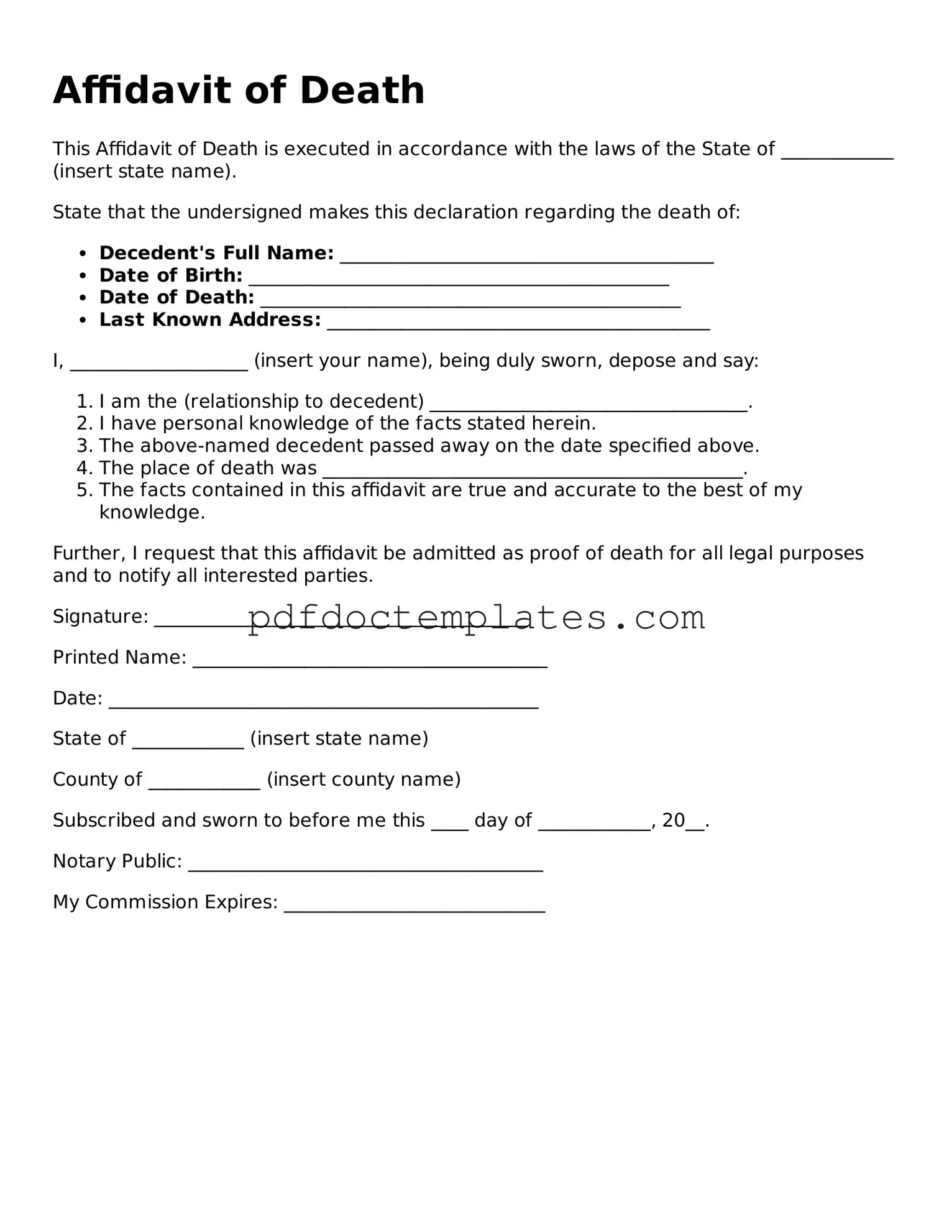Affidavit of Death
This Affidavit of Death is executed in accordance with the laws of the State of ____________ (insert state name).
State that the undersigned makes this declaration regarding the death of:
- Decedent's Full Name: ________________________________________
- Date of Birth: _____________________________________________
- Date of Death: _____________________________________________
- Last Known Address: _________________________________________
I, ___________________ (insert your name), being duly sworn, depose and say:
- I am the (relationship to decedent) __________________________________.
- I have personal knowledge of the facts stated herein.
- The above-named decedent passed away on the date specified above.
- The place of death was _____________________________________________.
- The facts contained in this affidavit are true and accurate to the best of my knowledge.
Further, I request that this affidavit be admitted as proof of death for all legal purposes and to notify all interested parties.
Signature: ________________________________________
Printed Name: ______________________________________
Date: ______________________________________________
State of ____________ (insert state name)
County of ____________ (insert county name)
Subscribed and sworn to before me this ____ day of ____________, 20__.
Notary Public: ______________________________________
My Commission Expires: ____________________________
